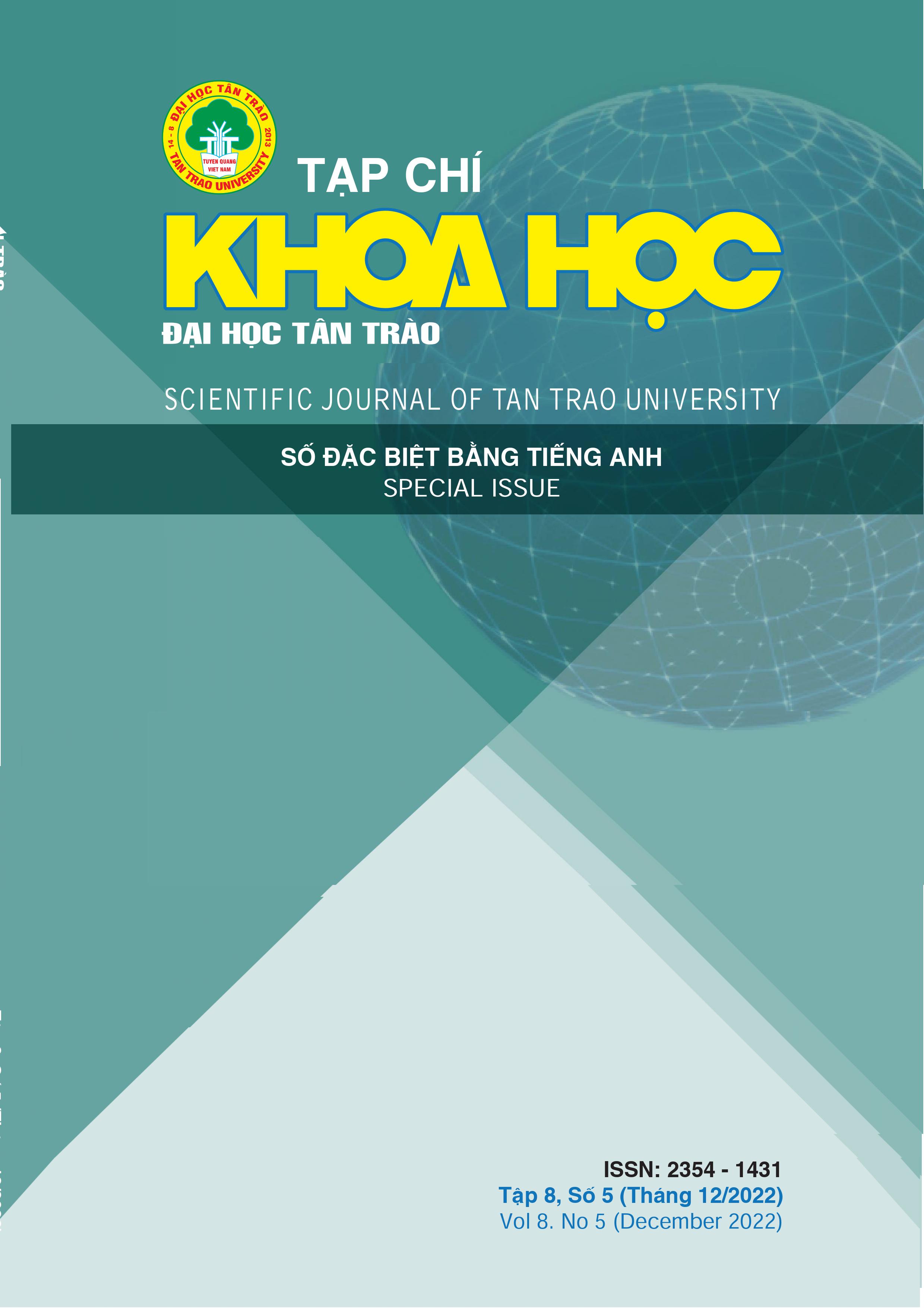PULLBACK ATTRACTORS FOR A NON-AUTONOMOUS SEMILINEAR STRONGLY DEGENERATE PARABOLIC EQUATION
DOI:
https://doi.org/10.51453/2354-1431/2022/840Abstract
In this paper, using the asymptotic a priori estimate method, we prove the existence of pullback attractors for a non-autonomous semilinear strongly degenerate parabolic equation in an arbitrary domain, without restriction on the growth order of the polynomial type non-linearity and with a suitable exponential growth of the external force. The obtained results improve some recent ones for the non-autonomous reaction–diffusion equations.
Downloads
References
[1] F. Boyer and P. Fabrie, Mathematical Tools for the Study of the Incompressible Navier-Stokes Equations and Related Models, Applied Mathematical Sciences, vol. 183. Springer, New York (2013).
[2] B. Franchi and E. Lanconelli, Une m†trique associ†e une classe d’op†rateurs elliptiques d†g†n†r†s, (French) [A metric associated with a class of degenerate elliptic operators] Conference on linear partial and pseudodifferential operators (Torino, 1982). Rend. Sem. Mat. Univ. Politec. Torino 1983, Special Issue (1984), 105-114.
[3] P.G. Geredeli, On the existence of regular global attractor for p−Laplacian evolution equation, Appl. Math. Optim, 71 (2015), 517- 532.
[4] P.G. Geredeli and A. Khanmamedov, Longtime dynamics of the parabolic p−Laplacian equation, Commun. Pure Appl. Anal, 12 (2013), 735-754.
[5] A.E. Kogoj and E. Lancenolli, On semilinear ∆λ-Laplace equation, Nonlinear Anal. 75 (2012), 4637-4649.
[6] A.E. Kogoj and S. Sonner: Attractors for a class of semi-linear degenerate parabolic equations, J. Evol. Equ. 13 (2013), 675-691.
[7] A.E. Kogoj and S. Sonner, Attractors met Xelliptic operators. J. Math. Anal. Appl. 420 (2014), 407-434.
[8] D. Li and C. Sun, Attractors for a class of semi-linear degenerate parabolic equations with critical exponent. J. Evol. Equ. 16 (2016), 997-1015.
[9] Y. Li and C.K. Zhong, Pullback attractors for the norm-to-weak continuous process and application to the onautonomous reactiondiffusion equations, Appl. Math. Comp. 190 (2007), 1020-1029.
[10] Y. Li, S. Wang and H. Wu, Pullback attractors for non-autonomous reaction-diffusion equations in Lp, Appl. Math. Comp. 207 (2009), 373-379.
[11] G. Lukaszewicz, On pullback attractors in H1 0(Ω) for nonautonomous reaction-diffusion equations, Int. J. Bifurcation Chaos Appl. Sci. Eng. 20 (2010), 2637-2644.
[12] G. Lukaszewicz, On pullback attractors in Lp for nonautonomous reaction-diffusion equations, Nonlinear Anal. 73 (2010), 350-357.
[13] D.T. Luyen and N.M. Tri, Existence of solutions to boundary-value problems for semilinear ∆ γdifferential equations, Math. Notes 97 (2015), 73-84.
[14] D.T. Quyet, L.T. Thuy and N.X. Tu, Semilinear strongly degenerate parabolic equations with a new class of onlinearities, Vietnam J. Math. 45 (2017), 507-517.
[15] J.C. Robinson, Infinite-Dimensional Dynamical Systems, Cambridge University Press, Cambridge, 2001.
[16] M.X. Thao, On the global attractor for a semilinear strongly degenerate parabolic equation, Acta Math. Vietnam. 41 (2016), 283-297.
[17] P.T. Thuy and N.M. Tri, Long-time behavior of solutions to semilinear parabolic equations involving strongly degenerate elliptic differential operators. Nonlinear Differential Equations Appl. 20 (2013), 1213-1224.
[18] N. X. Tu (2021), Global attractor for a semilinear strongly degenerate parabolic equation with exponential nonlinearity in unbounded domains, Commun. Korean Math. Soc. 37 (2022), No.2, pp. 423-443.
[19] B. Wang and R. Jones, Asymptotic behavior of a class of non-autonomous degenerate parabolic equations, Nonlinear Anal. 72 (2010), 3887-3902.
[20] Y. Wang and C.K. Zhong, On the existence of pullback attractors for non-autonomous reaction-diffusion equations, Dyn. Syst. 23 (2008), 1-16.
Downloads
Published
How to Cite
Issue
Section
License

This work is licensed under a Creative Commons Attribution-ShareAlike 4.0 International License.
All articles published in SJTTU are licensed under a Creative Commons Attribution-ShareAlike 4.0 International (CC BY-SA) license. This means anyone is free to copy, transform, or redistribute articles for any lawful purpose in any medium, provided they give appropriate attribution to the original author(s) and SJTTU, link to the license, indicate if changes were made, and redistribute any derivative work under the same license.
Copyright on articles is retained by the respective author(s), without restrictions. A non-exclusive license is granted to SJTTU to publish the article and identify itself as its original publisher, along with the commercial right to include the article in a hardcopy issue for sale to libraries and individuals.
Although the conditions of the CC BY-SA license don't apply to authors (as the copyright holder of your article, you have no restrictions on your rights), by submitting to SJTTU, authors recognize the rights of readers, and must grant any third party the right to use their article to the extent provided by the license.


